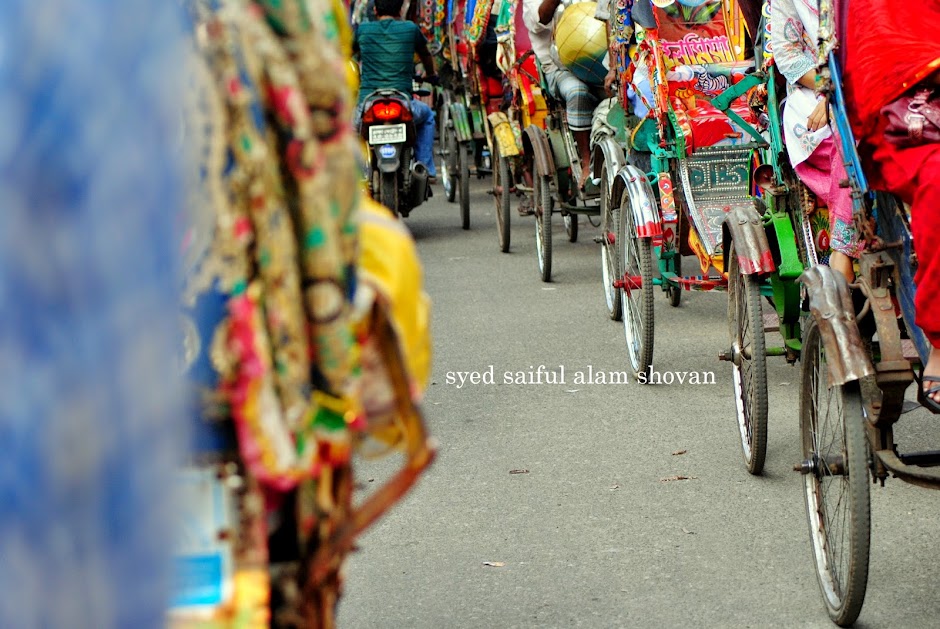Have any other cities of Asia become successful in solving
transport problems by banning fuel-free transport (FFT)?
It appears that we are going to commit the same mistake as General Suharto,
the then-dictator of Indonesia did by banning rickshaws (locally known as
becak) from Jakarta during the 1980s and thereby turning the city into a
traveller’s nightmare. Be it total or partial fuel-free transport (FFT) bans, past
experiences in other cities of Asia were not very pleasant either. Manila
banned FFT initially in the 1950s but some FFT re-emerged in the 1990s.
Bangkok banned FFT in 1960 and Karachi in 1962. Jakarta and New Delhi
followed suit and banned FFT during the 1980s. Transport statistics suggest
none of the cities that imposed FFT bans were able to solve their transport
problems by banning FFT. In most of the cases the situations became even
worse.
From the modal shares of different vehicles, it is evident that fuel-free vehicles
(FFV) were replaced by either motorcycles or motorised three-wheelers. The
modal share of motorcycles or motorised three-wheelers in these cities
accounts for 35% to 70% of the total vehicles (World Resource Institute 1996),
which is more or less similar to that of rickshaws in Dhaka.
The high growth of motorcycles and motorised three-wheelers contributed to
unbearable congestion and air pollution in the cities that banned FFT. The
alarming rates of growth of motorised two or three wheelers have become a
cause of serious concerns for the authorities of almost all FFT-free cities of
Asia. It is not surprising that banning of FFT promotes growth of such kind of
motorised monsters, which are obviously less efficient both from the
perspectives of traffic management and pollution control. Unlike fuel-free
vehicles, fuel-dependent (motorised) vehicles of all kinds utilise fuel which is
often heavily subsidised by the government and which emits carbon, the
major cause of global warming.
The average travel speeds in most FFT-free cities are generally lower than in
Dhaka. Bangkok and Jakarta are notorious for traffic congestion and
pollution. After almost two decades of suffering due to the ban, about 70% of
residents in the low income neighbourhoods of New Delhi and Jakarta now
favour reintroduction of FFT (Hook 2002). Surabaya, Hanoi and Ho Chi Minh
City restricted FFT movements on certain major roads in the 1990s. However,
banning of FFT from the major roads has proved to be a disaster for these
cities. Hanoi is now trying to limit motorcycle ownership and create bicycle
lanes, as motorcycles are clogging the streets, creating major air and noise
pollution, causing formerly unheard-of traffic jams, and making it difficult for
buses to ply the roads. Surabaya, the second largest city of Indonesia, has also
taken initiative to reverse the trends towards ever-greater motorisation.
It may be pointed out that in Surabaya, 60% of trips of under 3 km are made
by motorised transport, while in Germany, less than 20% of such trips are
motorised, the remaining being made by foot or bicycle. Yet incomes in
Germany are 40 times higher than in Surabaya (Hook 2002).
Banning FFT from main arterials severs continuity of large numbers of short
trips, which results in a significant increase in journey times, expense, and
sufferings to common people. It is very encouraging that the Mayor of
Surabaya has started the process of reintroducing FFT in major roads, where
they were previously banned (GTZ 2000). Being much weaker economically,
how could Bangladesh expect to solve its traffic problems by banning FFT
when the other cities of Asia have failed to do so? And how does Dhaka
anticipate dealing with the again-increasing incidence of air pollution, not to
mention the completely unacceptable levels of noise pollution from all the
cars and motorised three-wheelers?
Rickshaw Bans in Dhaka City: An Overview of the Arguments For and Against

No comments:
Post a Comment